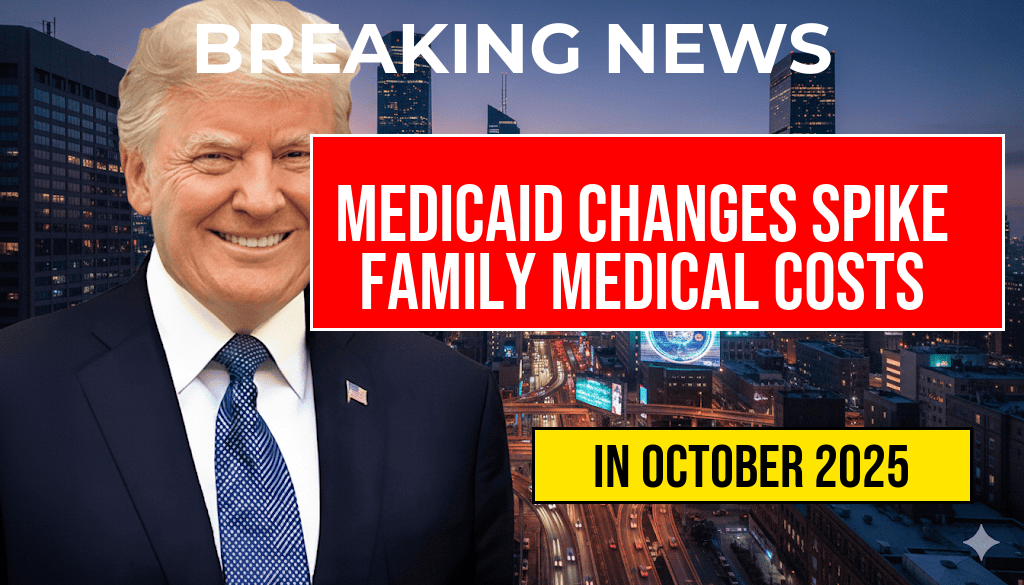As healthcare costs continue to soar across the United States, recent changes to Medicaid policies may leave families grappling with significant annual out-of-pocket expenses. A report from the Kaiser Family Foundation highlights that these adjustments could lead to increases exceeding $5,000 for many households, particularly affecting low-income families who rely on the program for essential medical services. The revised rules, set to take effect in the coming months, aim to streamline Medicaid eligibility but may inadvertently burden families with unforeseen healthcare costs. As policymakers debate the implications of these changes, stakeholders are raising concerns about the potential impact on vulnerable populations who may struggle to afford necessary treatments.
Understanding the Medicaid Changes
The recent modifications to Medicaid are part of a broader effort to manage the program’s fiscal sustainability. As states reevaluate their healthcare budgets, the adjustments may include stricter eligibility criteria, increased premiums, and higher cost-sharing requirements. These changes are expected to affect millions of Americans, particularly those who have transitioned into Medicaid during the COVID-19 pandemic.
Projected Financial Impact on Families
According to the Kaiser Family Foundation, families could see their out-of-pocket expenses rise due to several factors:
- Higher premiums: States may increase premiums, which can significantly affect those with lower incomes.
- Increased cost-sharing: Out-of-pocket costs for medications and treatments may also rise, putting pressure on family budgets.
- Eligibility changes: Stricter eligibility criteria may lead to many losing coverage altogether, forcing them to seek alternative, often more expensive, healthcare options.
The Broader Implications for Healthcare Access
The ramifications of these changes extend beyond individual families. Experts are concerned that increased financial burdens could deter families from seeking necessary medical care. A recent study from the National Center for Health Statistics found that individuals with high out-of-pocket costs are less likely to pursue preventive care, which can lead to worsened health outcomes over time.
Analysis of Recent Trends in Healthcare Costs
| Year | Average Annual Healthcare Cost per Family | Percentage Increase |
|---|---|---|
| 2019 | $28,500 | N/A |
| 2020 | $29,600 | 3.9% |
| 2021 | $31,000 | 4.7% |
| 2022 | $32,500 | 4.8% |
Responses from Advocates and Policymakers
Advocates for Medicaid beneficiaries have expressed alarm over the expected rise in costs. Many argue that the changes contradict the original intent of Medicaid, which was designed to provide safety net coverage for those most in need. Organizations such as the National Association of Medicaid Directors have called for a more balanced approach that does not compromise access to essential healthcare.
On the other hand, some policymakers argue that these changes are necessary for the program’s long-term viability. They maintain that states must find ways to curb spending while still providing adequate coverage. The debate continues as stakeholders work to find common ground that addresses both fiscal responsibility and the healthcare needs of vulnerable populations.
Conclusion: The Path Forward
As Medicaid changes loom on the horizon, families and advocates are left to navigate a complex landscape of rising healthcare costs. The potential for over $5,000 in additional out-of-pocket expenses raises critical questions about access to care and the sustainability of the program. Stakeholders will need to engage in constructive dialogue to ensure that the crucial services provided by Medicaid remain accessible to those who need them most. For further insights on healthcare trends, visit Kaiser Family Foundation or refer to Health Affairs for comprehensive research on healthcare policies.
Frequently Asked Questions
What are the recent changes to Medicaid that might affect families?
Recent changes to Medicaid eligibility and coverage have led to increased out-of-pocket expenses for families, potentially resulting in over $5,000 in annual costs. These changes may include reduced coverage options and stricter eligibility requirements.
How will the changes to Medicaid impact out-of-pocket costs?
The changes are expected to increase annual out-of-pocket costs for families by eliminating certain benefits and increasing premiums, resulting in families having to pay more for their medical care.
Who is most affected by the rising medical bills from Medicaid changes?
Families with low to moderate incomes are most affected, as they often rely heavily on Medicaid for healthcare coverage. The increased costs can place a significant financial burden on these households.
What steps can families take to manage rising medical costs?
Families can explore options such as seeking financial assistance programs, reviewing their healthcare plans for potential savings, and engaging with local advocacy groups that provide resources related to Medicaid and healthcare costs.
Are there alternatives to Medicaid for families facing increased costs?
Yes, families may consider alternatives such as purchasing private health insurance, exploring state-sponsored health plans, or seeking out community health services that offer lower-cost care to mitigate the impact of rising medical bills.






